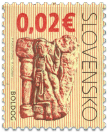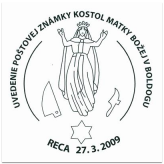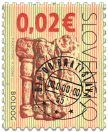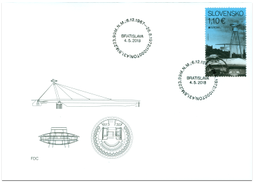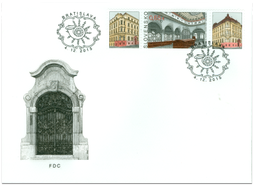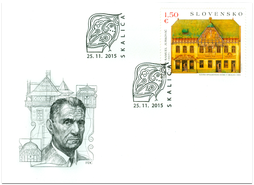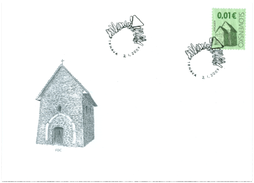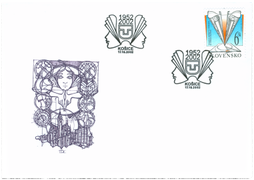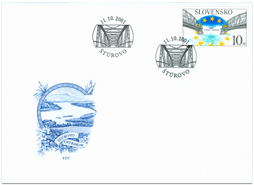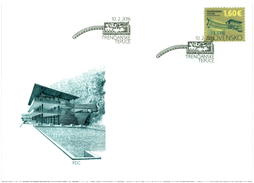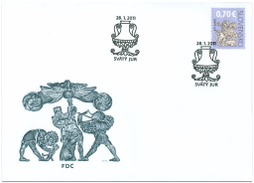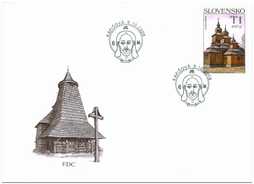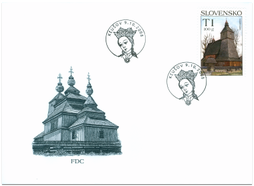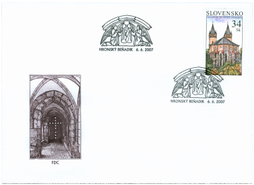FDC 439 Date of issue
02.01.2009 Face value
0.02 €
© Slovak Post, 2009 The church in Boldog is an interesting example of Romanesque architecture in rural environment. The wall masonry of the nave with several remarkable construction parts date back to the Romanesque period. The church presbytery is younger originating in late Gothic on the place of an older sanctuary whose appearance is unknown to us. Also the church nave itself was shaped during two Romanesque construction phases carried out in the 12th century and at the beginning of the 13th century. Two portals in the southern wall correspond with this dating. The older portal is in the form of a rectangular entry with a horizontal lintel, on which three crosses in a round medallion are depicted. During the construction, older grave plates from the Roman period were used: the left portal lintel is created by a stele of a Roman centurion and merchant Quintus Atilius Primus from the 1st century. The later portal was already made in the typical Romanesque form with a semicircular tympanum and relief decoration comprising a cross in a round medallion and palmettes. During the early Romanesque construction phase, the church tower was also erected. On its upper floors there are typical two and three-joint semicircular round arched windows. On western church corners, consoles in the form of heads of animals have been preserved. At the time of their origin, they were assigned with an apotrophaic – protective function. Apparently, it was a common practice to apply such kind of protective “elements“on the exterior of a sacral building. Similar consoles can be found e.g. in nearby Štvrtok na Ostrove. Invaluable prove of Romanesque stone-sculpture was preserved also in the interior of the church in Boldog, i.e. a relief-decorated font. It is represented by a reservoir supported by columns. Among them, the central relief of Christ with the left hand raised in a blessing gesture can be seen. The font (originally it might have been also a reservoir for Holy water, so called lavabo) being exceptionally rare in its form and decoration, is included in the fund of Roman monuments in Slovakia. Bibiana Pomfyová
Show less© 2024 POFIS - Postal philatelic service. All rights reserved


